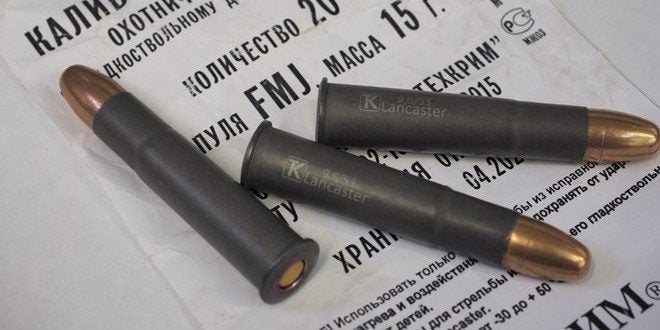The idea of .366 TKM cartridge was accepted really well in the Russian shooting community. What makes it unique for them is that firearms chambered in this caliber have partially rifled barrels which qualify as a shotgun in Russia and don’t require 5 year wait period for the first-time gun owners to obtain a rifled firearm. That rifled portion (about 135mm or so) is considered a built-in rifled choke (a.k.a. Paradox choke). In other words, they can buy these sort of small caliber slug cartridges and guns right off the shelf and still have somewhat rifle grade accuracy and power at moderate ranges (100 to 300 meters). In the video below a camera travels down the .366 TKM barrel (starting from the muzzle). Note how riflings start to disappear at some point and the bore becomes completely smooth.
The above-mentioned benefits of the .366 TKM eventually lead to the development of a new caliber built with the same concept – 9.6x53mm Lancaster. Also, the .366 TKM itself has gained more popularity. There are more and more Molot rifles chambered in this caliber as well as ammunition types and components introduced for reloaders. Let’s talk about each of these subjects separately.
9.6x53mm Lancaster
A couple of weeks ago Russian “Kalashnikov” Gun Magazine showed a sneak peek of the new cartridge called 9.6x53mm Lancaster. It is based on the 7.62x54R case necked up to the 9.6mm caliber.
The rumors around the 9.6x53mm Lancaster cartridge were floating around a long time. At first, people were calling it .411 TKM, which was wrong. Where that name came from is unclear. Probably it is a made up one by people who thought that the bigger brother of the .366 TKM should be a .40 caliber one and called it accordingly. Anyway, in the Q&A video conference arranged by Molot, the company officials addressed that misconception and announced that the new cartridge will be called 9.6x53mm Lancaster.
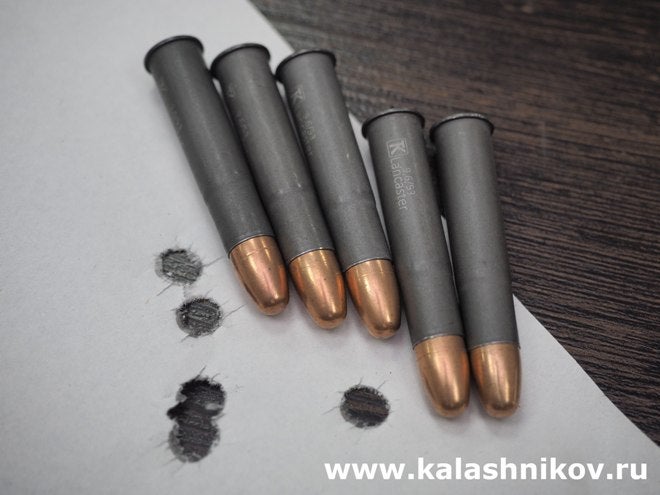
9.6x53mm Lancaster. Image courtesy of Mikhail Degtyaryov of “Kalashnikov” Gun Magazine
As described above, firearms chambered in .366 TKM have about 135 millimeters (5.3″ or so) of riflings from the muzzle end. In the case of the 9.6x53mm Lancaster, it is a bit different. The new cartridge is designed to be used in oval bore barrels. It is a rifling type pioneered in the 1850s by an English gentleman named Charles William Lancaster – hence the name of the cartridge: 9.6x53mm Lancaster.
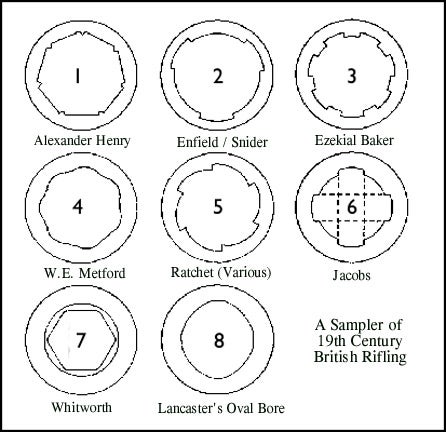
According to Molot officials, the 9.6x53mm Lancaster works at higher pressures compared to the .366 TKM, that’s why having a built-in rifled choke with conventional riflings would generate dangerous pressure increase where the bullet engages the riflings. They say, that the Lancaster oval bore is more suitable to handle the higher pressures of the 9.6x53mm cartridge. In the above image, you can see the comparison of different rifling styles among which is also the Lancaster oval bore. And that oval bore still retains the advantage of being considered as a smoothbore by the Russian law.
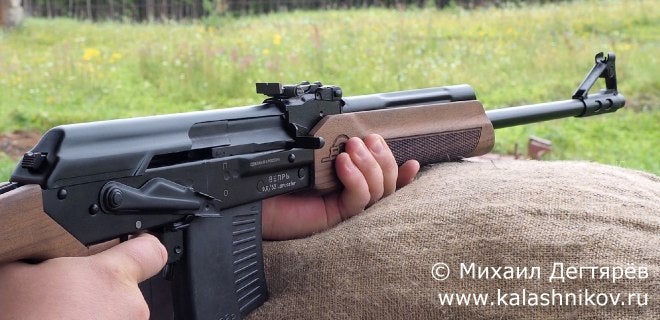
Vepr rifle chambered in 9.6x53mm Lancaster
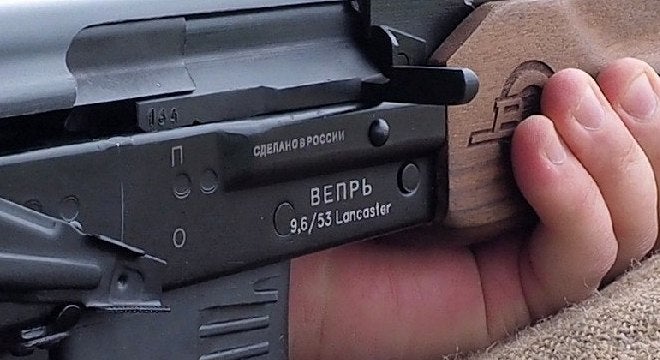
Reportedly there will be Mosin-Nagant rifles rebarreled in this caliber as well as new Vepr rifles. Possibly, newly built bolt action rifles in this caliber will be introduced too. Most of these new firearms, as well as the 9.6x53mm Lancaster cartridge itself, will probably be officially introduced during the Arms & Hunting 2017 expo in Moscow in October 2017.
.366 TKM Developments
As I said, this cartridge gained huge popularity among Russian shooters. And the proof of that is not only the huge amount of discussions of the caliber in Russian online resources but also the introduction of new products concerning this new cartridge.
Molot itself keeps showing new rifles chambered in this caliber. Anong them is an AK-based hunting rifle called Vepr Pioneer VPO-212-01 shown in the image below.

Molot has also recently introduced a new rifle called VPO-213 chambered in .366 TKM. It is based on the RPK receiver and comes with a couple of upgrades. It features a Picatinny rail on the dust cover for close quarter low/no magnification optics mounting. The gun also retains the side optics rail, which is a more robust platform and is suggested for mounting magnified optics for precision shooting. The rifle/shotgun also features a folding stock, safety selector with a thumb lever, chrome lined bore and RPK-style flash hider.

VPO-213
Another new Molot rifle with quick change barrel feature that I wrote about earlier (see the image below) will also have a barrel option chambered in the .366 TKM caliber. The shooting community also waits for the earlier shown VSS Vintorez in .366 TKM to hit the shelves of the stores.

The popularity of the cartridge lead some gunsmiths in Russia to make and sell reloading hand tools for the .366 TKM. I think one of the US reloading equipment manufacturers should start making .366 TKM dies. That would sell like hotcakes in the Russian market and would also boost the reloading presses and other equipment sales.
People even develop DIY methods for necking up the 7.62x39mm cartridge cases to make .366 TKM ones. In the video below, a man basically places a 5.45x39mm case into the 7.62x39mm case and necks up the latter by hitting the former with a hammer.
The only manufacturer of this cartridge (Techcrim), also recently introduced reloading components for this caliber – bullets, cases, primers and powder. Earlier, when this cartridge was new, they also showed a weird looking bullet made of a sort of glued together birdshot pellets. That was supposed to work as a shot load. Recently, Techcrim introduced .366 caliber shot projectiles which are made in a more “traditional” way with birdshot pellets captured in a polymer bullet-shaped sabot/container.

I don’t think these shot loads will become popular though. First, the whole idea behind this cartridge is to have something as close to a rifle as possible. Second, the small amount of the shot will barely be useful for any application. Third, the rifled portion of the barrel will spread the shot all over the place resulting in an extremely poor accuracy and donut shaped shot patterns.

Techcrim has published some shot spread images (see the above image) which seem to be good at first glance. However, the company says that these were shot from a smooth bore test barrel. That being said, I don’t understand why they show the smoothbore pattern to the customers whose firearms have the built-in rifled choke.
Historical Background of the Concept
Russian firearms designer Vladimir Fedorov in his book called “The Gunsmithing on the Verge of the Two Eras” (“Оружейное Дело на Грани Двух Эпох”) talks about his experiments with a similar concept (Volume 1, Chapter 10, Page 140). In the first quarter of 20th century, he was experimenting with increasing the mid-bore pressure in an attempt of gaining more muzzle velocity within the limits of existing powders. He offered to make half-rifled barrels with only one full twist length being rifled from the muzzle (9.45″ for the 7.62x54R). Interestingly, 4.45″ of that rifled portion was the leade – the portion where the rifling starts to appear until it gradually gets into its full depth. That is something extremely long for a leade. It was made so to have the already accelerated bullet to engage the riflings as gently as possible. Otherwise, it would generate extremely high pressures resulting in barrel failures. So the actual full-depth rifled section was the remaining 5″ long portion.

Image by bisonballistics.com
Sestroretsk Arsenal (the manufacturer of Mosin-Nagant rifles) made several such half-rifled Mosin Nagant barrels for Fedorov’s tests. By test firing these barrels, Fedorov managed to get 25-30 m/s (about 80 to 100 fps) of muzzle velocity increase. The accuracy tests with round nose bullets even proved to be comparable to the conventional fully rifled barrels. However, Spitzer bullets showed extremely poor accuracy with these half rifled barrels. That made Fedorov abandon the idea and halt the further tests of the concept.
Although Fedorov’s experiments and the .366 TKM pursue different goals, from the mechanical standpoint they were executed pretty similarly.
That’s all the news concerning these unusual ammunition/firearm systems. We’ll keep our readers informed concerning further development of this concept. Please let us know about your thoughts in the comments section below.
 Your Privacy Choices
Your Privacy Choices
